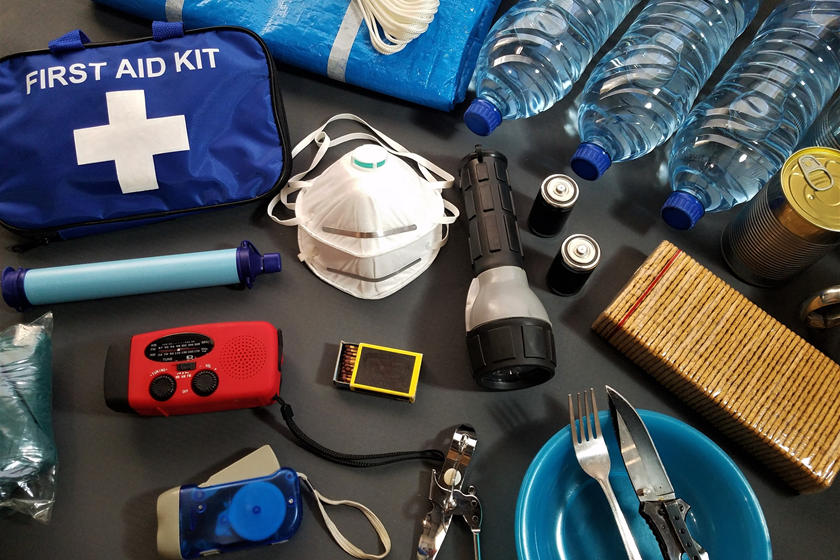We talk to the unsung heroes of a grand prix weekend. It's not just about Hamilton, Bottas, and Wolff.
The F1 driver heads to the podium, dripping with sweat. The last few hours have been physically and mentally draining, but it's all worth it once he raises yet another glinting trophy over his head. The crowd goes wild. It's his victory.
Except it isn't. Hundreds of people worked away behind the scenes to help achieve this victory. There's the team principal and the engineers. These guys also tend to get their time in the spotlight if they're good at their jobs. Famous engineers and team bosses include Adrian Newey, Gordon Murray, Ross Brawn, Colin Chapman, Toto Wolff, and Christian Horner.
Even the consultants (former F1 drivers) get some glory. Mercedes-AMG Petronas famously employed Niki Lauda to help out in the years before his death in 2019, and Helmut Marko is always on hand at Red Bull to provide a controversial statement to the media.
But we want to dig a bit deeper and get right to the people who never get any sort of recognition, other than a thankful driver occasionally throwing them thanks when he remembers.
From the person in charge of feeding the team and the guy holding the jack that hoists the car up, to the team doctor charged with keeping everyone healthy. Even the people who aren't trackside, working away at the team's headquarters crunching data and doing development work.
They never get the glory, even when they break a world record. At the 2019 Brazilian Grand Prix, Max Verstappen's pit crew set a new world record. They completed a full tire swap in just 1.82 seconds, which is around the time it took the average reader to finish a sentence like this one.
DHL has an exciting website that tracks pit crew performance over a season, but it's hidden where nobody on earth ever looks - on page two of a Google search. In case you were wondering, Red Bull's pit crew is consistently fast. Its average for the 2021 season is 2.19 seconds, followed by Ferrari at 2.29 seconds and Mercedes in third with 2.31 seconds. All but one of the top ten times this year is occupied by Red Bull, and the majority are below two seconds.
Even on this awards website, you won't find any individual names. It's an anonymous mass of men and women, all hidden behind a face mask. The only piece of online admiration we could find was a little-known documentary called the History of the Pit Stop, available to view for free on Red Bull TV. It gives you a little taste of what it takes to be one of the 16 guys who are allowed to go out into a live pitlane.
That's why we jumped at the opportunity to spend some time with the Mercedes-AMG Petronas F1 team. More specifically, the trackside fluid engineers. We'll get into more detail on that in a later article, but first, we thought it pertinent to tell you what the average week looks like for them. Unlike the drivers, it's not Friday, then Saturday, Sunday, whuuuut? Thanks, Lando Norris.
First, how many people are involved? It depends entirely on the team, but a well-funded team has around 1,000 people working to achieve two main goals: winning the driver's and constructor's championships.
The circus usually kicks off in March in Australia, though the COVID-19 pandemic has thrown the calendar entirely out of whack. There's usually a two-week gap between races, but every once in a while, you'll see back-to-back race weekends. This year, in just over one month, the teams went from Italy to Russia to the US. Next year will be even harder now that the Miami Grand Prix joins the calendar. That's 23 races from March to November.
Even before that, the car needs to be introduced to the media, and pre-season testing needs to take place. The driver will likely be away to attend the press launch of something like the Mercedes-AMG One.
First off, these guys spend a lot of time in the sky and likely even more time at airports. Getting everyone and everything from one country to the next must be a logistical nightmare, and, in hindsight, we regret not asking who exactly is the go-to person for that. But this is not about names, just a general sense of how an average week works.
When an F1 team takes over a hotel, it takes over the whole hotel. We were pretty surprised to find out that everyone shares the same accommodations and dining facilities. It would not be odd to walk into a dining hall to see Valtteri Bottas dining with the gearbox team. While this may appear as a cost-cutting measure, we get the sense that it plays a significant role in team morale. Everyone has access to everyone else, though there is a clear communications channel between the various departments. The fluid team discovers engine wear, and it's communicated via the engineer to the mechanics. There's too much at stake to simply mention it in passing to someone while waiting for scrambled eggs at the buffet.
Every person does make an effort to maximize their role as a trackside team member. En De Liow, a trackside fluid engineer from Malaysia, sometimes doubles as the person in charge of holding up Bottas' pit boards. That's quite a skillset. We're granted access to the team on a Thursday evening ahead of the Qatar Grand Prix. We ask whether they're ready for the hard work ahead. As it turns out, the hard work is, for the most part, finished. The car is essentially handed over to the driver by Friday morning, who gets one weekend to work it hard, hopefully adding points to the board.
The first thing to manage is jet lag. If you've ever experienced jet lag, you know it usually takes a few days to get over it, and that's if you're a regular traveler who knows what to do. A sample from next year's calendar gives you one example of the time difference these teams work in. The team will finish up with the Brazilian Grand Prix on Sunday, 13 November, and they have to be ready to hit the ground running in Abu Dhabi on Tuesday, 15 November. That's a seven-hour time difference, and you have one day to get over it.
Mercedes employs a full-time doctor and physiotherapist who prepares a plan ahead of time. The program tells you when to sleep on the plane, how much daylight you need to see where you're going, and when to go to sleep. Sometimes the plan forces you to stay awake after the Grand Prix when every fiber of your body just wants to hit the sack.
Tuesday is setting everything up, from the mobile lab that does fluid testing to the catering booth where you can grab an in-between snack. Most important of all is the temporary headquarters, which we've seen once or twice in Drive to Survive. It's a mobile boardroom with seats for the manager, the drivers, HODs, and a few other important people. The debriefing meetings start on Tuesday and last until Sunday night.
Once again, think of the logistics. There are thousands of wires that need to be connected correctly for the team to communicate appropriately. We hear the drivers making hilarious or controversial statements, but you don't think about how it took a technician to connect all the wires behind the scenes.
Haas deserves special mention here because they are a low-budget team. While most puzzle pieces are flown across the globe, Haas makes do with what little it has. Earlier this year, the team was spied unloading one of its cars from the rear of a humble Fiat van. In Monaco. Not exactly a stylish entrance.
On Wednesday, everything is tested thoroughly. We'll delve into that a bit deeper in an upcoming article with a particular focus on the fluid team.
On Thursday, the car roars to life for the first time but not with a driver behind the wheel. Afterward, everything is tested again.
On Friday... Well, we know that part. Free practice starts; the team gets the first real-world performance figures. The changes they're allowed to make are dictated by the FIA, as we've seen a few times this year. You get a certain number of engine changes before the drivers have to take penalties.
Even aerodynamic testing is regulated. There's a sliding scale that determines how much time a team can spend on aerodynamic development. Mercedes has won the last few constructor's championships, which means they get the least amount of aero development time. Yup, that's right. The better you do, the less development time you get.
As the regulations currently stand, almost every part of the car is carefully regulated, right down to the number of tires it may use. Other limited-use parts and their allocation per season include the exhaust system (8), the ICE (3), heat motor-generator units (3), turbochargers (3), energy storage (2), control electronics (2), and kinetic motor-generators (3).
Sitting in the mobile boardroom, the team has to figure out the best strategy for the weekend, keeping all of the above in mind. It's not a case of the driver simply going out and driving at ten-tenths.
Somehow, teams still manage to tweak the cars to find more speed and grip. How? Well, that's not something that Mercedes-AMG Petronas wants to share.
After the post-race debrief, the whole circus packs up and moves to the next destination. In between races, the teams scatter across the globe to their respective homes, whether that be Turin, Frankfurt, or London.
The next time you watch an F1 Grand Prix, keep these people in mind. We often read statements that Lewis Hamiton is only fast because he has a faster car. That's disrespectful only to Lewis Hamilton but it does shine a light - albeit a very small one - on the work done behind the scenes. They go through everything he does apart from the racing bit - the long hours, the fitness training, living out of a suitcase, and the devastating blow when they don't finish on top.
Right here, at the bottom, you can see the core team. In the photograph, you'll note that the packing has already started. The fans have gone home and the TV cameras have been turned off. The victorious man is proudly in the middle, next to his famous teammate and team boss. And surrounding them are all the people who helped get him there.









Join The Discussion